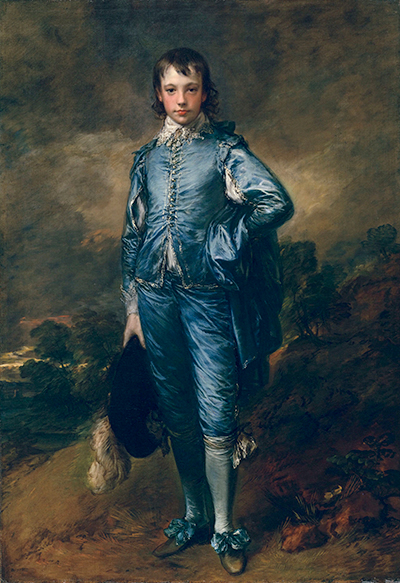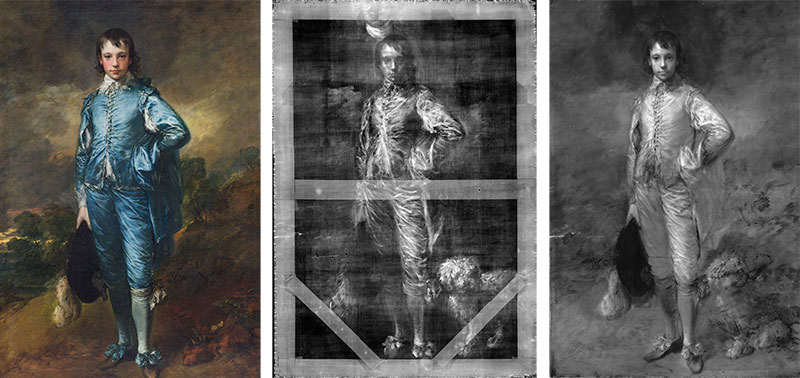At first blush, Thomas Gainsborough’s famous work known as “The Blue Boy” seems like a simple enough painting of a well-to-do 18th-century young master of the upper class, dressed to the nines in his little blue suit. However, some new details have come to light as the painting undergoes restoration at its home, The Huntington Library, Art Collections, and Botanical Gardens in San Marino, California. It turns out “The Blue Boy” has a few secrets that we’ve forgotten about over the years…and a few new stories to tell.

The 1770 painting, included in our third-grade curriculum, is undergoing what The Huntington calls its “first major conservation treatment” to address “both structural and visual concerns.” According to The Huntington, the painting is so popular that it’s been on almost constant display since the galleries were opened to the public almost 100 years ago. However, The Huntington has a solution that will allow the painting to be restored while not disappointing visitors who’ve come to see “The Blue Boy.” Opening September 22, a new exhibition titled Project Blue Boy will allow visitors to explore the conservation techniques currently being used to restore the famous painting…and reveal some of “The Blue Boy”‘s hidden secrets.
Recent conservation treatments have included adding layers of varnish, dulling the work’s original colors, says Christina O’Connell, The Huntington’s senior paintings conservator and co-curator of the exhibition. The exhibition will explain how the team is working to restore the painting’s colors, and how the team is going about fixing structural problems like paint lifting and flaking and the deterioration of its adhesive binding.

In addition, Project Blue Boy will reveal some previously hidden elements of the famous painting. According to this article from The Press-Enterprise, the exhibition will note the 1994 discovery that the Blue Boy once had a canine companion. An earlier addition to the canvas discovered by X-ray almost 25 years ago, the fluffy white pup was painted over, transformed into a pile of rocks. And the dog isn’t alone: a 1939 X-ray revealed that Gainsborough had painted over “an unfinished image of an older man.”
Why was the pup scrapped from the painting? The article draws on a 1995 Los Angeles Times interview with then-curator Shelly Bennett for a possible answer, stating “…the dog could have simply been a concept or perhaps it conflicted with the aristocratic aims of the painting or maybe simply its fluffiness was at odds with the boy’s feather-bedecked hat.”
Project Blue Boy will also reveal a newly-uncovered L-shaped tear “more than 11 inches long,” discovered during the current project that’s still under way. In addition to checking out the exhibit, visitors may be able to watch O’Connell at work on the restoration on select days during the exhibition, which runs through January 2019. However, once this leg of the restoration process is over, the painting will be removed from view through 2020 for further work and reframing.
So if you want to learn the Blue Boy’s secrets or catch a glimpse of him before he’s removed from view, get yourself to the Huntington this fall.
Discover more about Project Blue Boy at The Huntington’s website, in this article by Michelle Mills from The Press-Enterprise, and in this 1995 article from the LA Times.
What do we do here at the Art Docent Program? Discover more about our program here!
Want more fun art news? Check out our blog archives for more!
Don’t forget to follow us on Facebook!







